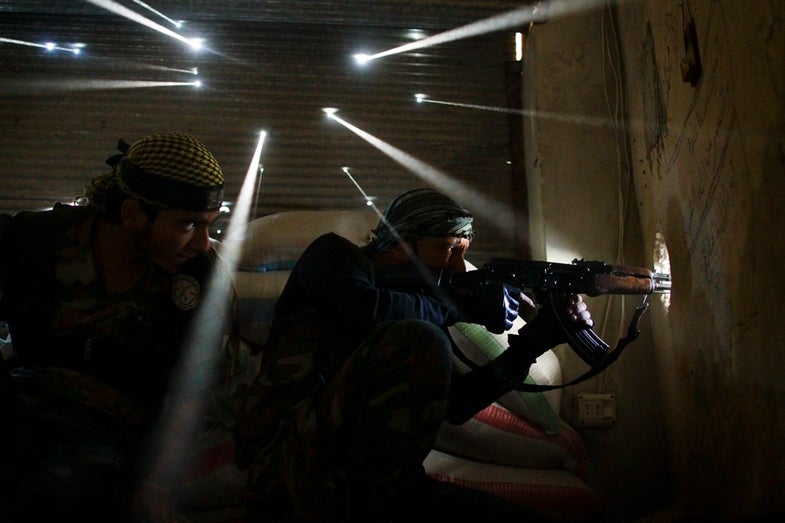Go Where It’s Hard To Shoot (That’s Where The Pulitzers Are)
The 2013 Pulitzer Prizes were announced this week, and it’s not a surprise that the winners for Breaking News and...

The 2013 Pulitzer Prizes were announced this week, and it’s not a surprise that the winners for Breaking News and Feature photography are sourced exclusively from what was probably the world’s most dangerous place in 2013: Syria.
Hoping to limit international exposure of their violent suppression of rebellion, the Syrian regime essentially stopped issuing press visas. That meant reporters had to find alternative means of access, putting themselves in greater personal danger in the process. For war photographers, the story’s going to be told, no matter how antagonistic the regime or risky the journey. And if you’ve been following our weekly photojournalism roundup, you know that they succeeded.
It’s not a huge surprise, then, that this year’s Feature award was given to a freelance photographer for the first time in 17 years—the challenge is especially appealing to those with no major affiliations. Javier Manzano’s image of rebel snipers holding a position in Aleppo as pins of light streamed through bullet holes in the wall was picked up by AFP during the 9 months he spent in Syria. It’s one of many singular shots—you can see the rest on his Shutterstock here.

But the major wires were on the ground too, of course, and doing equally amazing work. The Breaking News award also went to work from Syria by AP’s team: Rodrigo Abd, Manu Brabo, Narciso Contreras, Khalil Hamra and Muhammed Muheisen. Their ongoing coverage of the civil war and all its destruction. You can see a sampling of this work here.